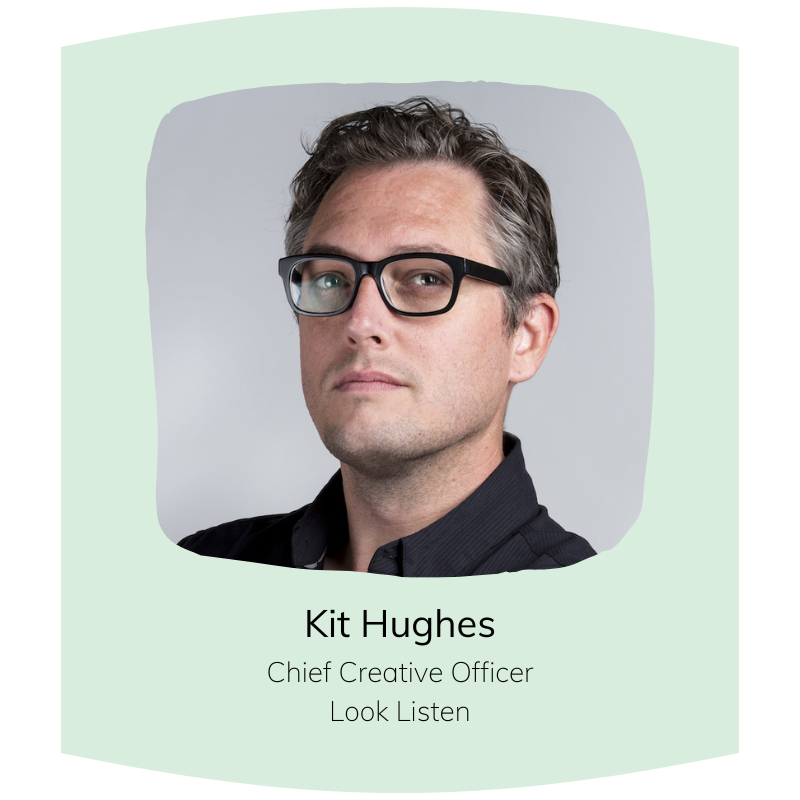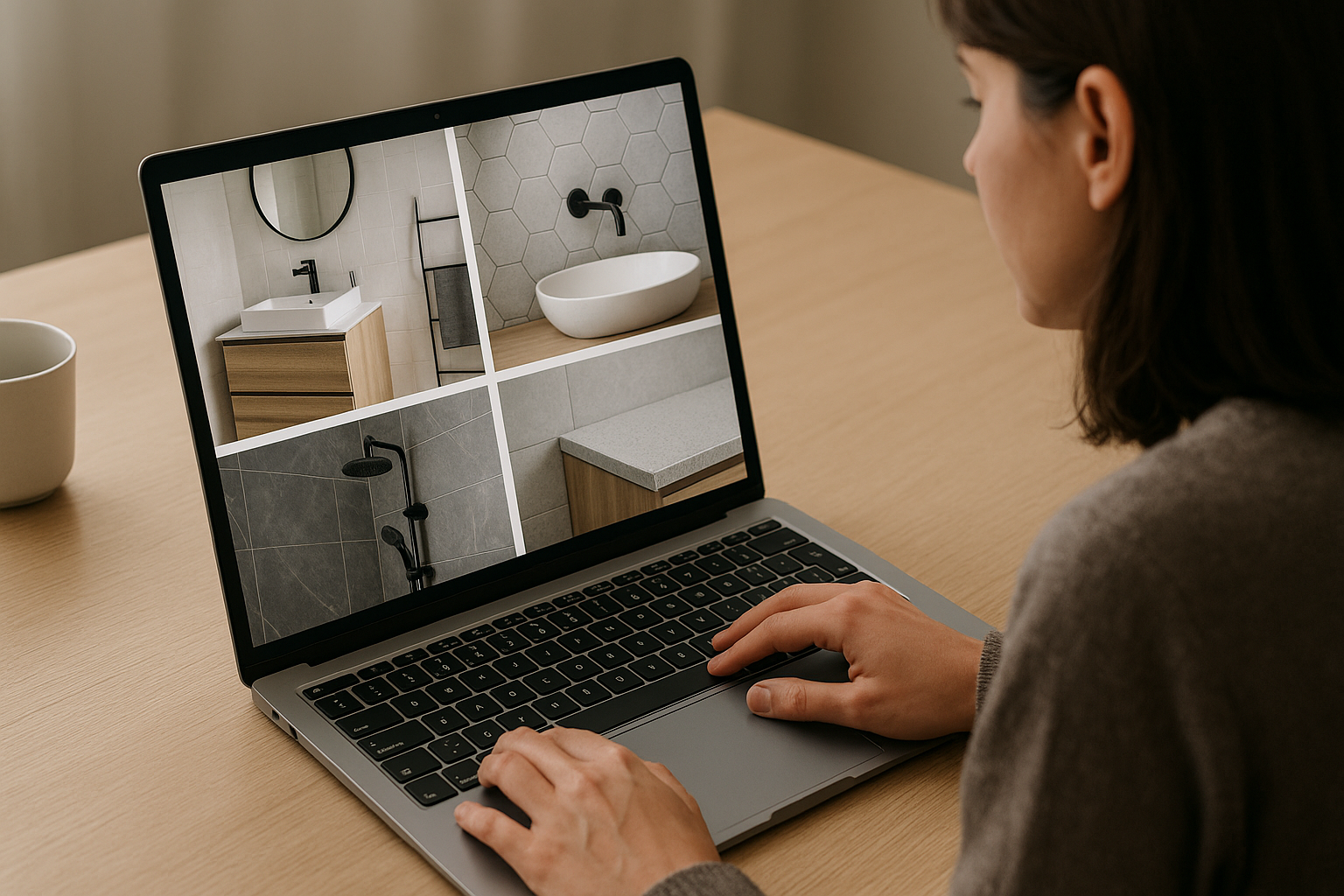Expert UX Tips + Tricks
Time and time again, marketers are told to listen to the consumer. We can learn what they like based on trends, analyzing consumer data, copying competitors, but, after all of the research, how do you apply what you know to create a successful User Experience?
It may be easier to develop a creative or engaging experience in person, but how can marketers optimize their UX tools online? We spoke to marketing UX experts Michael McMillan, the Sr. Director of User Experience Design, Product Design, and Client Onboarding at Ansira; Maddie Harris, the UX Designer at Sagepath Reply; and Kit Hughes, the Chief Creative Officer at Look Listen, about their predictions, challenges, and advice when it comes to executing a successful UX strategy.
Q1 | What are some key UX principles that you use to guide your clients?
Consistency is key. Harris stated, “Developing standards and guidelines for the product is critical for users to adapt quickly and have a positive experience. Avoid leaving users to guess about the functionality of a tool, making them uncertain about where to go next.”
Strive for simplicity. “The typical user wants to complete their goals or tasks as quickly and efficiently as possible.” Harris continued, “It’s easy to overinflate products with unnecessary features or become superfluous with content. Identify the essential parts of your product and highlight them so users can quickly scan to find what they might need.”
Focus on the end user. “Fulfilling user needs is the most critical aspect of a successful product. It’s essential to balance the needs of clients and stakeholders while also ensuring the user experience remains straightforward,” shared Harris. McMillan from Ansira chimed in, “All clients have unique problems, but all those problems can be solved by talking to the people about how they use the product/process/service.”
Be human oriented. “Users are real people, let’s identify their challenges and work through solutions,” shared McMillan.
Context. McMillan continued, “Context is the key to defining your user experience strategy. Where, when and why defines the user journey, and provides the key point where designers can create interactions.”
Ask questions. The result must fit the need of the experience. Hughes from Look Listen shared that their process involves asking three simple questions: Who is our audience? What do we want them to know? And What action do we want them to take? We work with the insightful answers to those questions to create customized principle(s) that govern the design of the experience.
Q2 | How has UX changed in the last few years?
Ansira’s Thoughts on Accessibility + Psychology in the Space
There has been a strong and very appropriate shift towards accessibility leading shifts in the visual experience. Higher contrast colors provide more dramatic visuals within the UI and provides a bold look for many brands as they react to the changing shift. Many of our clients look to Ansira to provide direction and compliance for the current guidelines and to build experiences across multiple platforms that deliver both useability and results.
Psychology plays a key role and is prevalent in the skills of recent graduates. At Ansira, our UX team partners with our strategy teams to provide clients with a 360 view of the people who use the product. Discovery includes 1:1 interviews to uncover needs and define current and future states. This partnership provides the designers with an understanding of the consumer’s intent and allows the formulation of a stronger persona to guide design decisions throughout the experience.
Sagepath Reply’s Thoughts on Connecting the Digital + Physical Experiences
Psychology plays a more significant role now more than ever as we attempt to connect the hospitality of physical space to the newfound comfort and familiarity of digital experiences. More brands are using websites and apps to connect the physical space to digital experiences. Recently, we worked with a spirit company that wished to evoke the experience of their physical distillery and the tours they offer into the design of their new website. Interior details from their gift shop were depicted in both the visual and functional aspects of the presented design, while the welcoming, personable atmosphere of the on-site tours found its way into the tone of voice and page hierarchy.
Look Listen’s Thoughts on Utilizing Data to Understand Behavior
We have seen a deeper commitment to qualitative inputs on the front-end of projects married with quantitative analysis and testing once deployed. For our company, this brings our analytics practice (built on behavioral neuroscience principles) closer to the design practice (built on human-centered design). One key shift we have driven because of this is the use of behavioral archetypes as the preferred way to capture human behaviors, not just one dimensional personas that serve as marketing profiles.
Q3 | How do you pivot when there is a challenge (platform, technology, etc.)?
Strategic Planning
The Marketing industry can be unpredictable, but prioritizing the client’s needs and communicating the timeline and expectations before the project begins and throughout the experience results in the best delivery.
“Client work is always a balance between providing an amazing experience and delivering the product on time and budget.” McMillan continued, “Both are equally as important and must be weighed against one another during discovery. Preplanning before any design work helps to prevent some of those challenges but may not eliminate others that arise based on launch timing or bandwidth constraints. For those, it’s important to lean into our discovery work using our personas and user journeys to redefine and deliver an experience that delights the consumer.”
Alignment
If all key parties have a common goal, it is easier to pivot, or come up with solutions when there are challenges.
Hughes explained, “Even though the solution to a challenge can often start with working backwards from constraints, we always start with the people involved. A pivot will only be successful if the entire group of stakeholders pivot with you. We put those stakeholders as the key players—using scenario thinking to evaluate many possible outcomes—and seek to understand how to arrive at the right ‘pivot’. This approach incorporates stakeholder buy-in within the process, which leads to our favorite outcome: mutual success.”
Q4 | Do you have an example of work or an interesting scenario with a client that you’d like to share?
Ansira | An entertainment client building out their total in-store experience, website, shopping, CRM, and app development.
This multifaceted project has challenged the team to see the full experience from store and kiosk interactions to mobile app experience and how those tie back to the information and journey provided on the website.
From a UX perspective, this forces the team to lean into the personas to help link these experiences together providing seamless interactions across multiple journeys and at the same time deliver on defined business metrics and objectives. There are so many different aspects of this work, from interviews, in-store testing, wireframing, virtual user testing, HiFi mocks, design systems, development QA and everything in between. This truly defines experience design with people focused direction guiding the process and execution.
Look Listen | Our women-owned/led agency is focused on branding, experience design, media, and content for health and wealth companies.
When we get to expand their audience through diversity, equity, and inclusion practices, we shine. For years, we have partnered with Georgia-Pacific on KOLO, their IoT initiative for creating clean and healthy bathroom, office, and travel environments. We regularly conduct ethnographic research and iterate based on analytics, because the person cleaning the restrooms needs an app that differs from the operations manager's app focused on reviewing dashboards and reports. Georgia-Pacific's commitment to provide UI and experiences to users based on research is a perfect example of how a core tool can flexibly meet users at their skill level or job needs.
With each of our industry expert blogs, we hope to add more tools or insights to your toolbelt by giving you a look into the effective methods expert market agencies use in their UX work to stay top of mind. If you’d like to check out more contribution blogs featuring groundbreaking innovations of marketing leaders, check out our blogs here.

































Over the past year, we’ve watched the following patterns emerge across seemingly unrelated sectors: rising consumer expectations, demand for authenticity, growing complexity, and the tension between automation and human connection.
We interviewed multiple marketers from an array of industries in our blogs below, and we discovered consistent trends across the board. Check out all of our industry blogs throughout 2025 from leaders at Blackbaud, Hiscox USA, Mimedx, MONPURE, Kimberly-Clark Professional, and more.